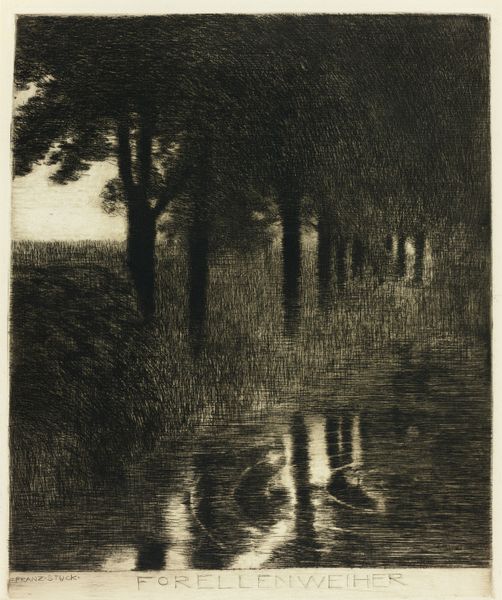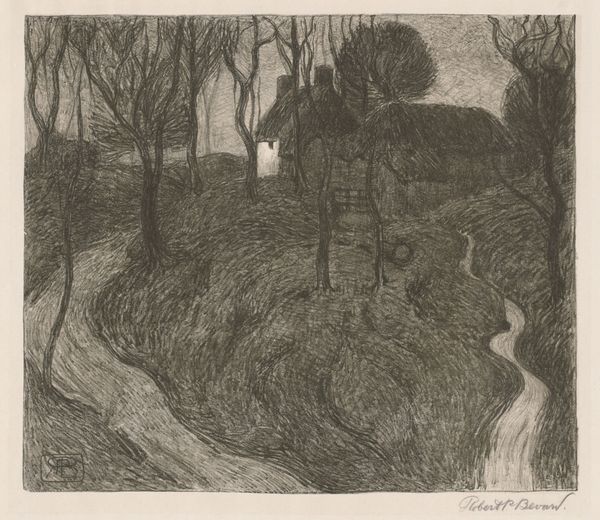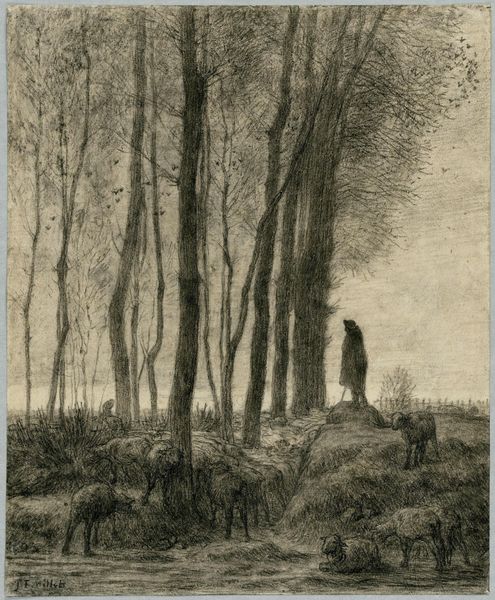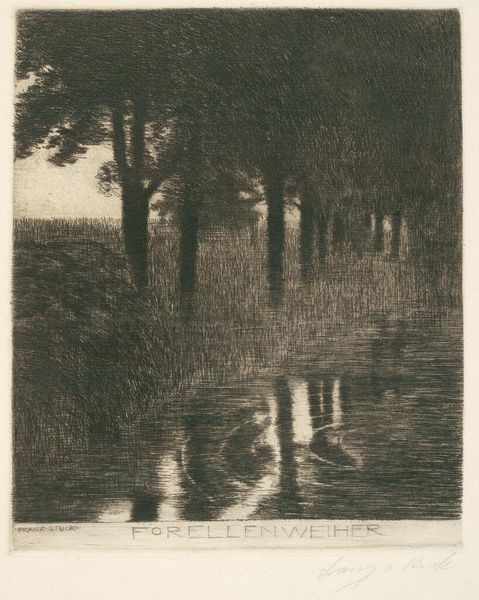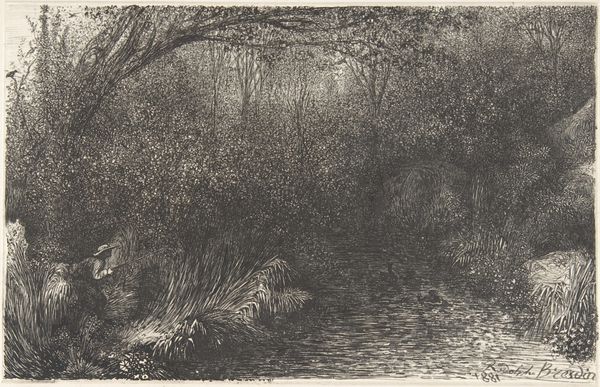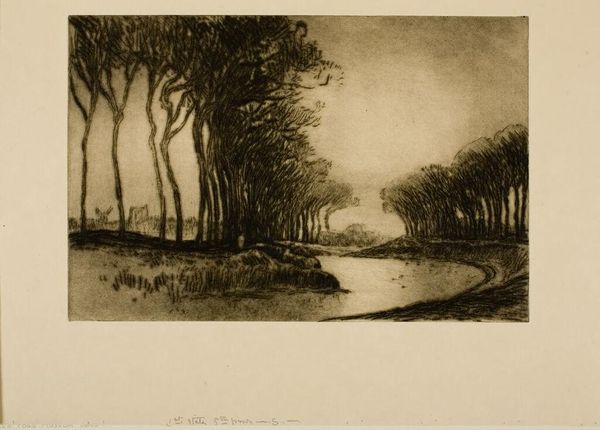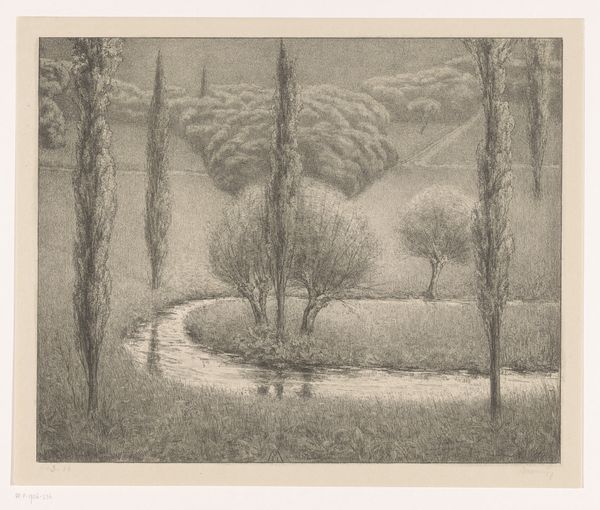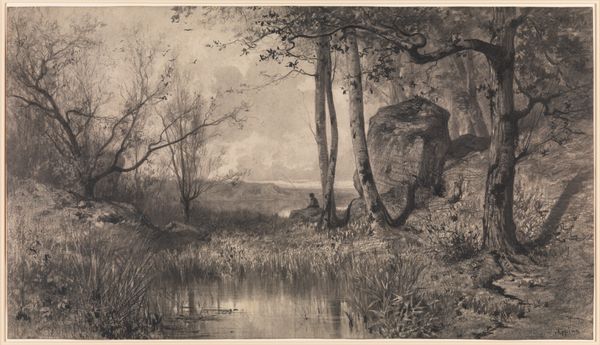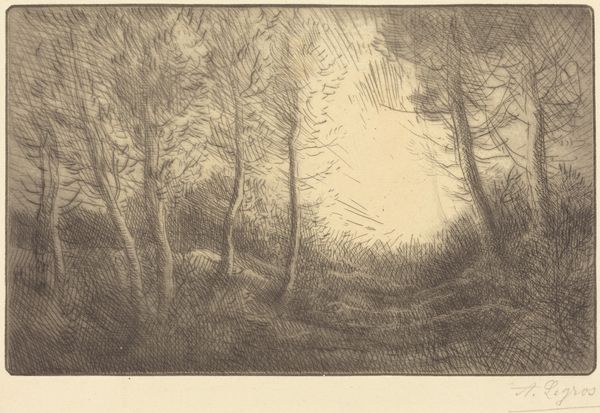
print, woodcut
# print
#
landscape
#
woodcut
Dimensions: image: 19.37 × 23.5 cm (7 5/8 × 9 1/4 in.) sheet: 21.59 × 26.19 cm (8 1/2 × 10 5/16 in.)
Copyright: National Gallery of Art: CC0 1.0
Curator: Ah, here we have Charles William Taylor's woodcut print, "Epping Forest," likely created sometime in the 1920s or 30s. It captures a striking woodland scene. Editor: Stark contrasts, wouldn't you say? The blacks and whites just pop! Makes me think of film noir, that tension... Even in nature, it's there. Curator: Absolutely! The high contrast is typical of woodcut printing, and the dense pattern of lines gives it such depth. One can almost smell the damp earth and feel the stillness of the forest, except for those elegant deer near the back! It has a certain, almost medieval, illustrative quality. Editor: Woodcuts—talk about labor! Can you imagine carving that level of detail, removing all that material to leave the design standing in relief? So many tools and hours involved, the patience of it all, to mass-produce a work like this! And it still feels very individualistic, organic, the product of a lone artisan! Curator: Yes! The act of creating such an artwork, and the artist’s unique perspective, adds to the viewing experience, almost like a collaboration across time. When I see something like this, so full of nature's grandeur, rendered with so much attention to detail, I just want to slip into the scene. Do you get that sense? A sort of idealized pastoral England? Editor: Hmm, idealised maybe, but it is a print. So Taylor must've made multiples. This wasn't for just him. Maybe he was imagining this nature-ideal for others and packaging that view for popular consumption, turning "nature" into a sort of aesthetic product of culture in general. Curator: Well, whether an "aesthetic product," it’s still something pretty wondrous, the dedication required for this form, and also it just *feels* timeless. A place of calm, still resonating today. Editor: Agreed! Considering the labor involved in woodcut printing really opens your eyes to how artwork like this transforms natural environments into valuable images that can be endlessly replicated. Pretty nifty for the period!
Comments
No comments
Be the first to comment and join the conversation on the ultimate creative platform.


